15 — 1 Irwin/Mc. Graw-Hill ©The Mc. Graw-Hill

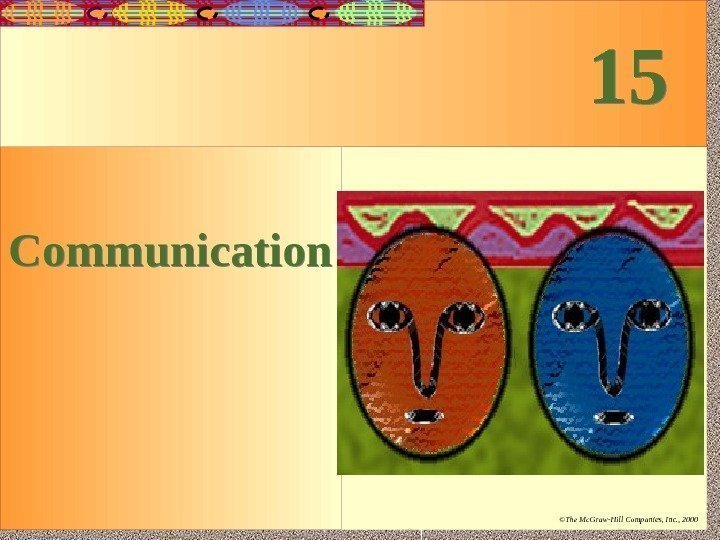
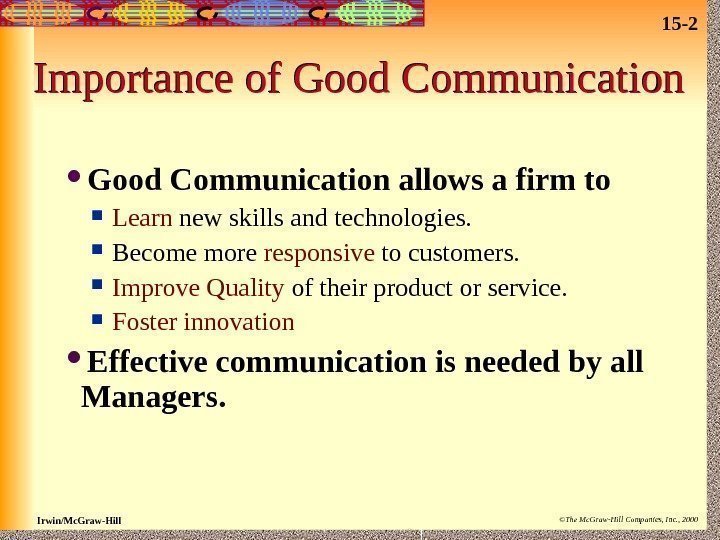
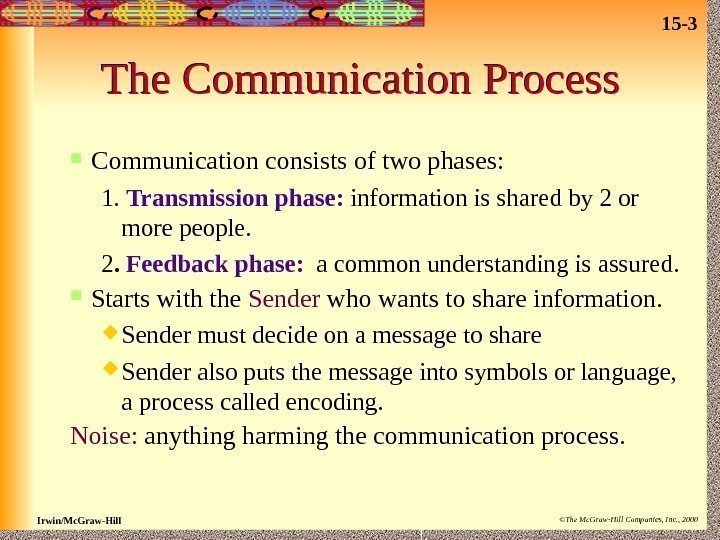
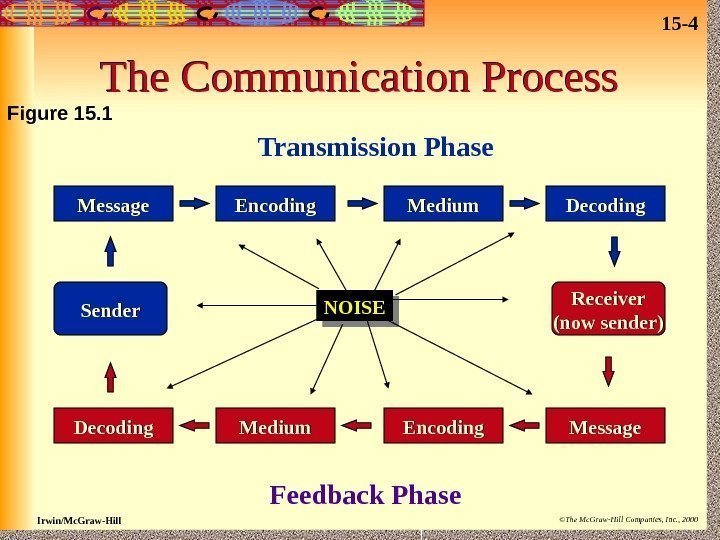
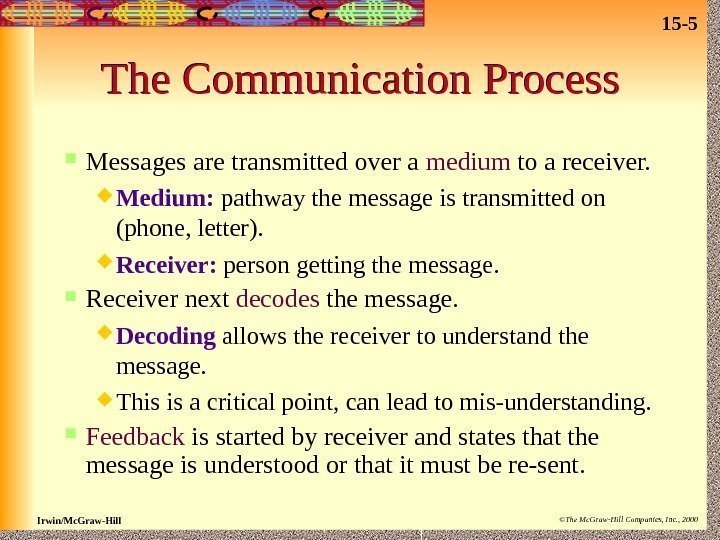
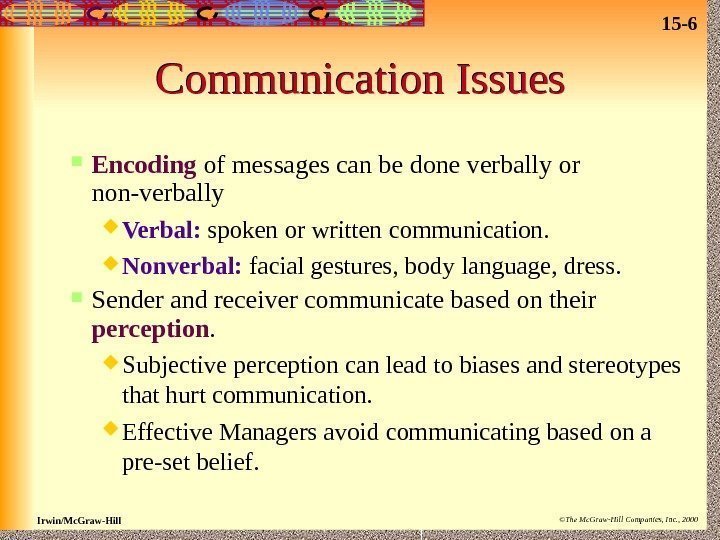
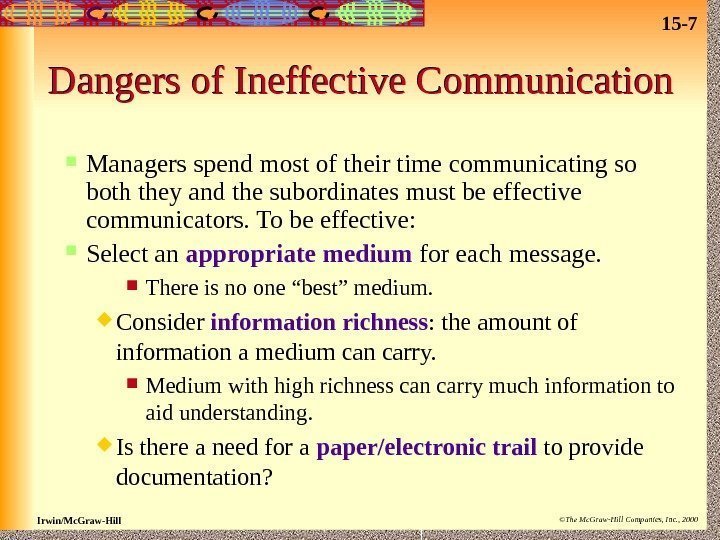
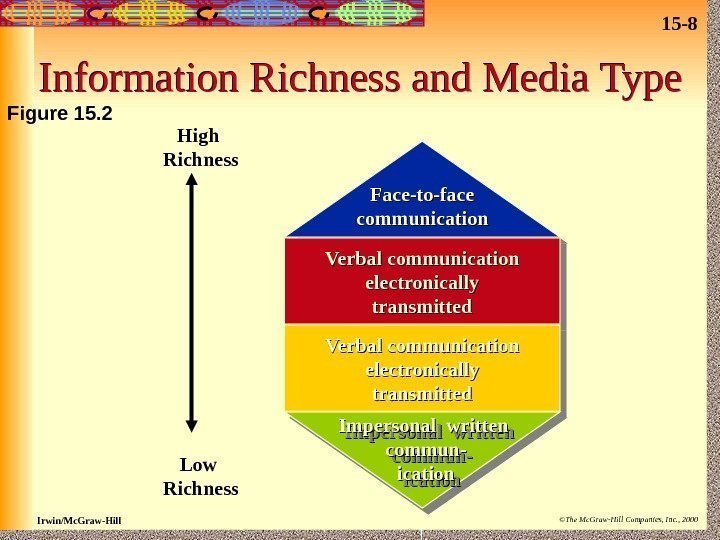
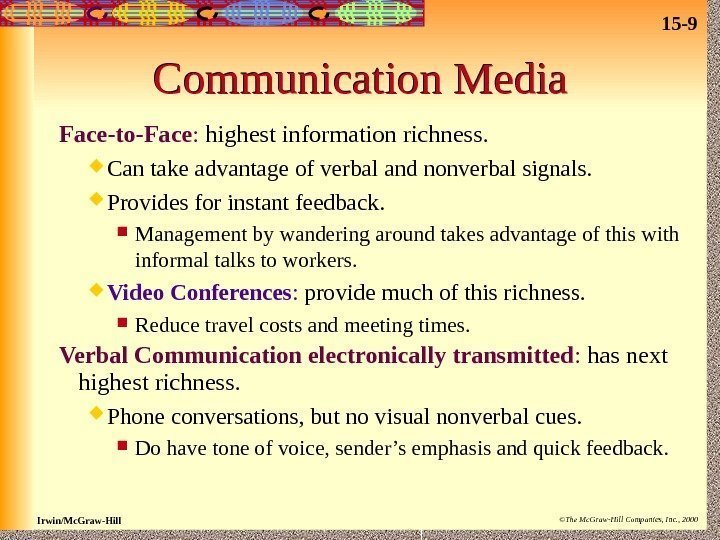
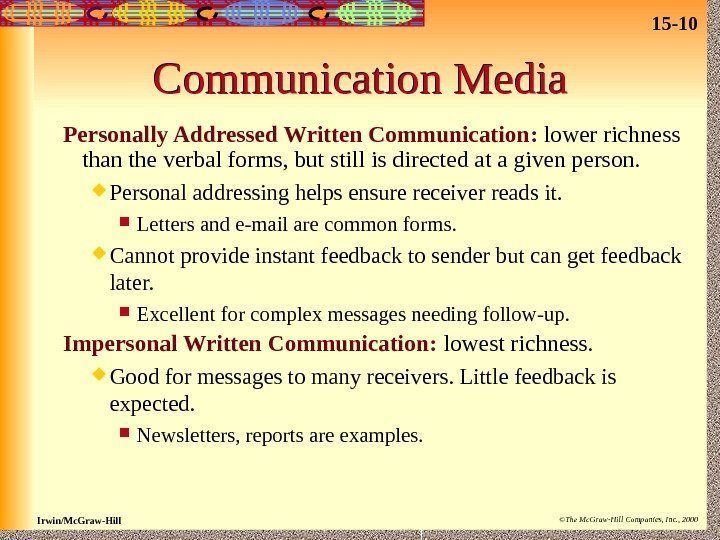
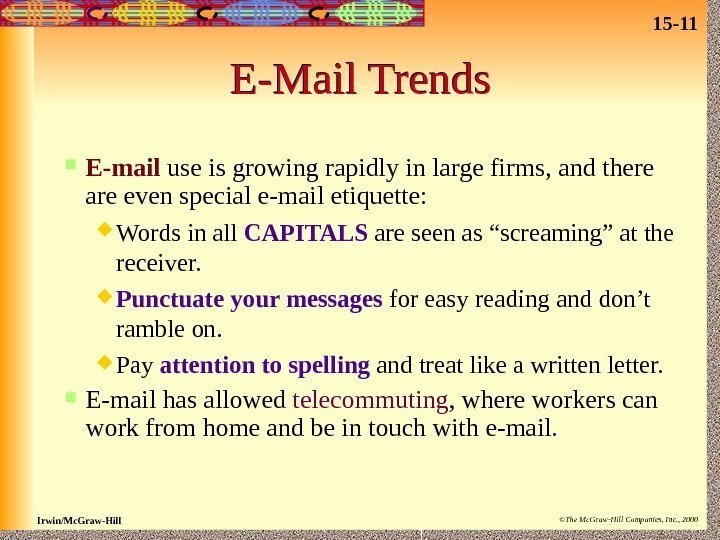
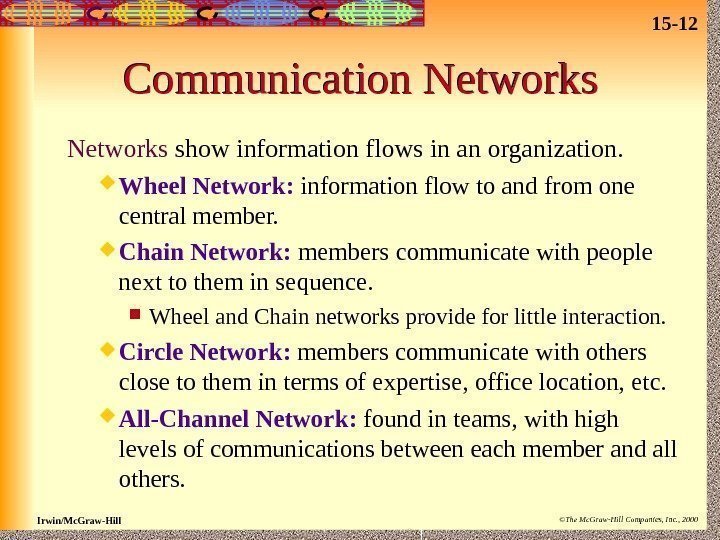
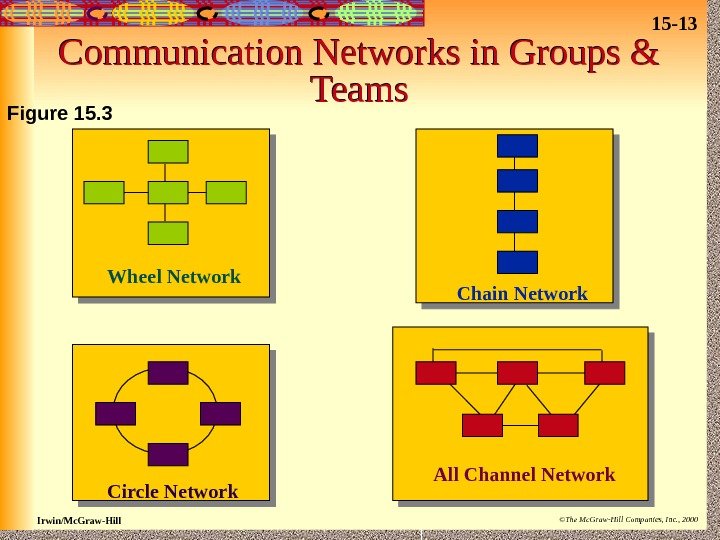
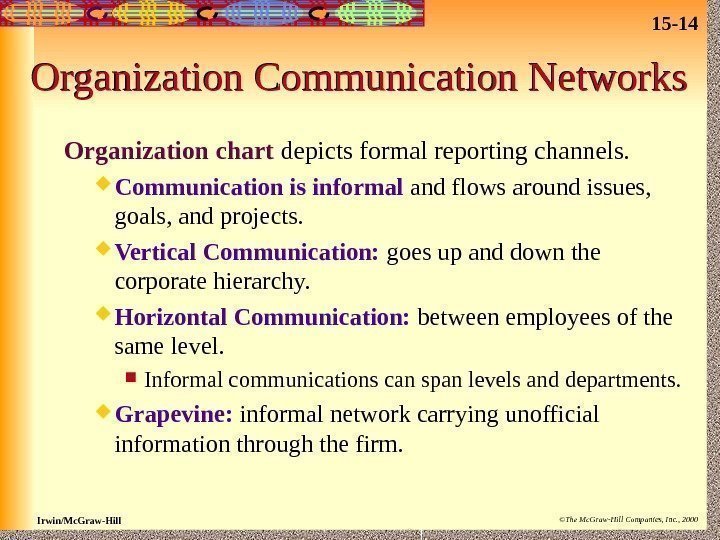
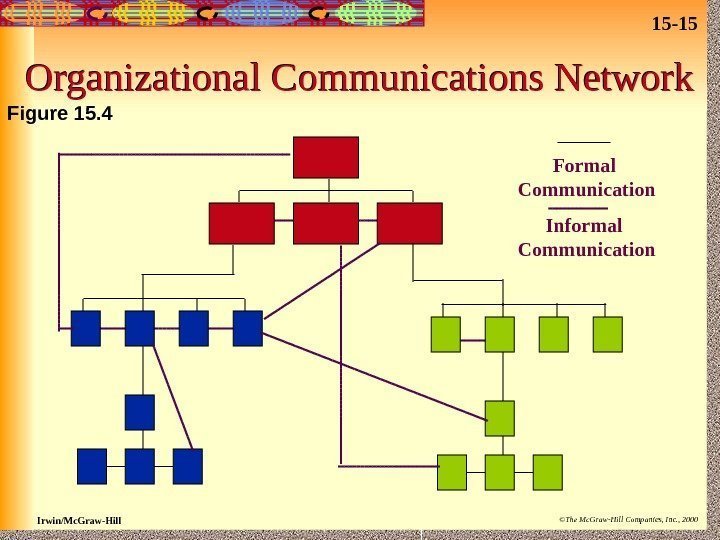
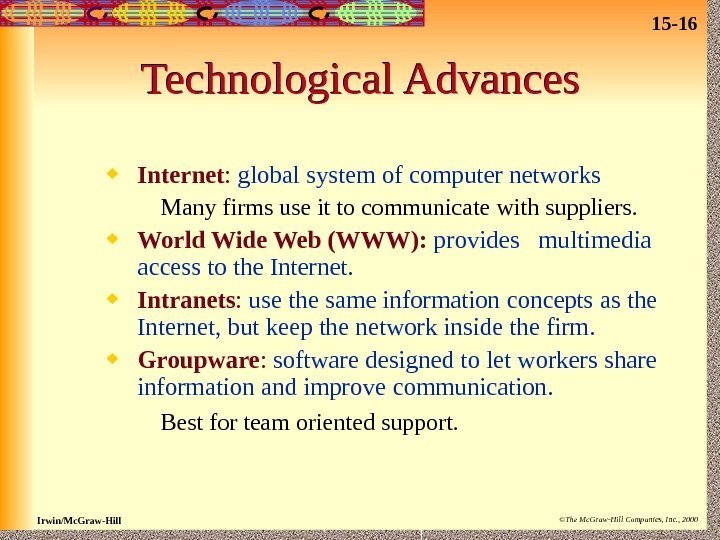
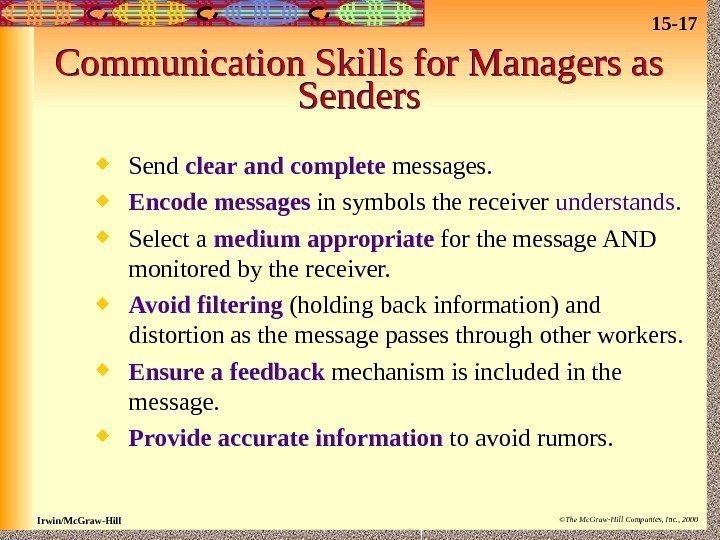
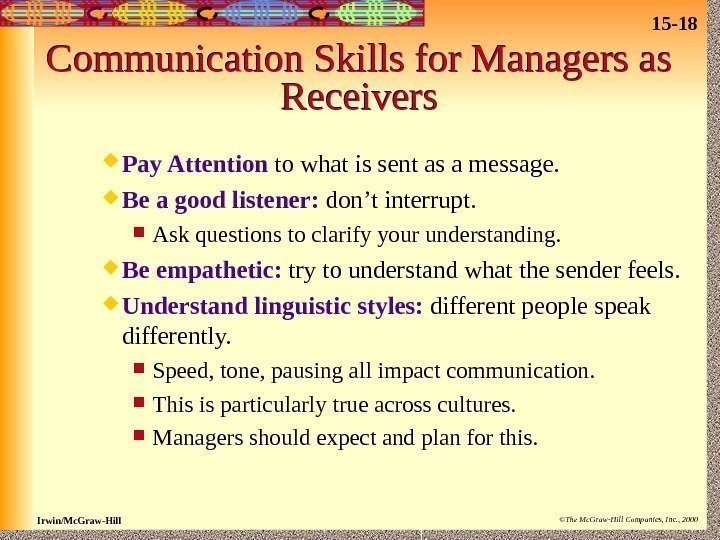
chpt15.ppt
- Размер: 163.0 Кб
- Автор:
- Количество слайдов: 18
Описание презентации 15 — 1 Irwin/Mc. Graw-Hill ©The Mc. Graw-Hill по слайдам
 15 — 1 Irwin/Mc. Graw-Hill ©The Mc. Graw-Hill Companies, Inc. , 2000 Communication
15 — 1 Irwin/Mc. Graw-Hill ©The Mc. Graw-Hill Companies, Inc. , 2000 Communication
 15 — 2 Irwin/Mc. Graw-Hill ©The Mc. Graw-Hill Companies, Inc. , 2000 Importance of Good Communication allows a firm to Learn new skills and technologies. Become more responsive to customers. Improve Quality of their product or service. Foster innovation Effective communication is needed by all Managers.
15 — 2 Irwin/Mc. Graw-Hill ©The Mc. Graw-Hill Companies, Inc. , 2000 Importance of Good Communication allows a firm to Learn new skills and technologies. Become more responsive to customers. Improve Quality of their product or service. Foster innovation Effective communication is needed by all Managers.
 15 — 3 Irwin/Mc. Graw-Hill ©The Mc. Graw-Hill Companies, Inc. , 2000 The Communication Process Communication consists of two phases: 1. Transmission phase: information is shared by 2 or more people. 2. Feedback phase: a common understanding is assured. Starts with the Sender who wants to share information. Sender must decide on a message to share Sender also puts the message into symbols or language, a process called encoding. Noise: anything harming the communication process.
15 — 3 Irwin/Mc. Graw-Hill ©The Mc. Graw-Hill Companies, Inc. , 2000 The Communication Process Communication consists of two phases: 1. Transmission phase: information is shared by 2 or more people. 2. Feedback phase: a common understanding is assured. Starts with the Sender who wants to share information. Sender must decide on a message to share Sender also puts the message into symbols or language, a process called encoding. Noise: anything harming the communication process.
 15 — 4 Irwin/Mc. Graw-Hill ©The Mc. Graw-Hill Companies, Inc. , 2000 The Communication Process Message Encoding Medium Decoding Medium Encoding Message Receiver (now sender)Sender Transmission Phase Feedback Phase NOISEFigure 15.
15 — 4 Irwin/Mc. Graw-Hill ©The Mc. Graw-Hill Companies, Inc. , 2000 The Communication Process Message Encoding Medium Decoding Medium Encoding Message Receiver (now sender)Sender Transmission Phase Feedback Phase NOISEFigure 15.
 15 — 5 Irwin/Mc. Graw-Hill ©The Mc. Graw-Hill Companies, Inc. , 2000 The Communication Process Messages are transmitted over a medium to a receiver. Medium: pathway the message is transmitted on (phone, letter). Receiver: person getting the message. Receiver next decodes the message. Decoding allows the receiver to understand the message. This is a critical point, can lead to mis-understanding. Feedback is started by receiver and states that the message is understood or that it must be re-sent.
15 — 5 Irwin/Mc. Graw-Hill ©The Mc. Graw-Hill Companies, Inc. , 2000 The Communication Process Messages are transmitted over a medium to a receiver. Medium: pathway the message is transmitted on (phone, letter). Receiver: person getting the message. Receiver next decodes the message. Decoding allows the receiver to understand the message. This is a critical point, can lead to mis-understanding. Feedback is started by receiver and states that the message is understood or that it must be re-sent.
 15 — 6 Irwin/Mc. Graw-Hill ©The Mc. Graw-Hill Companies, Inc. , 2000 Communication Issues Encoding of messages can be done verbally or non-verbally Verbal: spoken or written communication. Nonverbal: facial gestures, body language, dress. Sender and receiver communicate based on their perception. Subjective perception can lead to biases and stereotypes that hurt communication. Effective Managers avoid communicating based on a pre-set belief.
15 — 6 Irwin/Mc. Graw-Hill ©The Mc. Graw-Hill Companies, Inc. , 2000 Communication Issues Encoding of messages can be done verbally or non-verbally Verbal: spoken or written communication. Nonverbal: facial gestures, body language, dress. Sender and receiver communicate based on their perception. Subjective perception can lead to biases and stereotypes that hurt communication. Effective Managers avoid communicating based on a pre-set belief.
 15 — 7 Irwin/Mc. Graw-Hill ©The Mc. Graw-Hill Companies, Inc. , 2000 Dangers of Ineffective Communication Managers spend most of their time communicating so both they and the subordinates must be effective communicators. To be effective: Select an appropriate medium for each message. There is no one “best” medium. Consider information richness : the amount of information a medium can carry. Medium with high richness can carry much information to aid understanding. Is there a need for a paper/electronic trail to provide documentation?
15 — 7 Irwin/Mc. Graw-Hill ©The Mc. Graw-Hill Companies, Inc. , 2000 Dangers of Ineffective Communication Managers spend most of their time communicating so both they and the subordinates must be effective communicators. To be effective: Select an appropriate medium for each message. There is no one “best” medium. Consider information richness : the amount of information a medium can carry. Medium with high richness can carry much information to aid understanding. Is there a need for a paper/electronic trail to provide documentation?
 15 — 8 Irwin/Mc. Graw-Hill ©The Mc. Graw-Hill Companies, Inc. , 2000 Information Richness and Media Type Face-to-face communicationcommunication Verbal communication electronicallyelectronically transmittedtransmitted Impersonal written commun-commun- icationication. High Richness Low Richness. Figure 15.
15 — 8 Irwin/Mc. Graw-Hill ©The Mc. Graw-Hill Companies, Inc. , 2000 Information Richness and Media Type Face-to-face communicationcommunication Verbal communication electronicallyelectronically transmittedtransmitted Impersonal written commun-commun- icationication. High Richness Low Richness. Figure 15.
 15 — 9 Irwin/Mc. Graw-Hill ©The Mc. Graw-Hill Companies, Inc. , 2000 Communication Media Face-to-Face : highest information richness. Can take advantage of verbal and nonverbal signals. Provides for instant feedback. Management by wandering around takes advantage of this with informal talks to workers. Video Conferences : provide much of this richness. Reduce travel costs and meeting times. Verbal Communication electronically transmitted : has next highest richness. Phone conversations, but no visual nonverbal cues. Do have tone of voice, sender’s emphasis and quick feedback.
15 — 9 Irwin/Mc. Graw-Hill ©The Mc. Graw-Hill Companies, Inc. , 2000 Communication Media Face-to-Face : highest information richness. Can take advantage of verbal and nonverbal signals. Provides for instant feedback. Management by wandering around takes advantage of this with informal talks to workers. Video Conferences : provide much of this richness. Reduce travel costs and meeting times. Verbal Communication electronically transmitted : has next highest richness. Phone conversations, but no visual nonverbal cues. Do have tone of voice, sender’s emphasis and quick feedback.
 15 — 10 Irwin/Mc. Graw-Hill ©The Mc. Graw-Hill Companies, Inc. , 2000 Communication Media Personally Addressed Written Communication : lower richness than the verbal forms, but still is directed at a given person. Personal addressing helps ensure receiver reads it. Letters and e-mail are common forms. Cannot provide instant feedback to sender but can get feedback later. Excellent for complex messages needing follow-up. Impersonal Written Communication : lowest richness. Good for messages to many receivers. Little feedback is expected. Newsletters, reports are examples.
15 — 10 Irwin/Mc. Graw-Hill ©The Mc. Graw-Hill Companies, Inc. , 2000 Communication Media Personally Addressed Written Communication : lower richness than the verbal forms, but still is directed at a given person. Personal addressing helps ensure receiver reads it. Letters and e-mail are common forms. Cannot provide instant feedback to sender but can get feedback later. Excellent for complex messages needing follow-up. Impersonal Written Communication : lowest richness. Good for messages to many receivers. Little feedback is expected. Newsletters, reports are examples.
 15 — 11 Irwin/Mc. Graw-Hill ©The Mc. Graw-Hill Companies, Inc. , 2000 E-Mail Trends E-mail use is growing rapidly in large firms, and there are even special e-mail etiquette: Words in all CAPITALS are seen as “screaming” at the receiver. Punctuate your messages for easy reading and don’t ramble on. Pay attention to spelling and treat like a written letter. E-mail has allowed telecommuting , where workers can work from home and be in touch with e-mail.
15 — 11 Irwin/Mc. Graw-Hill ©The Mc. Graw-Hill Companies, Inc. , 2000 E-Mail Trends E-mail use is growing rapidly in large firms, and there are even special e-mail etiquette: Words in all CAPITALS are seen as “screaming” at the receiver. Punctuate your messages for easy reading and don’t ramble on. Pay attention to spelling and treat like a written letter. E-mail has allowed telecommuting , where workers can work from home and be in touch with e-mail.
 15 — 12 Irwin/Mc. Graw-Hill ©The Mc. Graw-Hill Companies, Inc. , 2000 Communication Networks show information flows in an organization. Wheel Network: information flow to and from one central member. Chain Network: members communicate with people next to them in sequence. Wheel and Chain networks provide for little interaction. Circle Network: members communicate with others close to them in terms of expertise, office location, etc. All-Channel Network: found in teams, with high levels of communications between each member and all others.
15 — 12 Irwin/Mc. Graw-Hill ©The Mc. Graw-Hill Companies, Inc. , 2000 Communication Networks show information flows in an organization. Wheel Network: information flow to and from one central member. Chain Network: members communicate with people next to them in sequence. Wheel and Chain networks provide for little interaction. Circle Network: members communicate with others close to them in terms of expertise, office location, etc. All-Channel Network: found in teams, with high levels of communications between each member and all others.
 15 — 13 Irwin/Mc. Graw-Hill ©The Mc. Graw-Hill Companies, Inc. , 2000 Communication Networks in Groups & Teams Wheel Network Circle Network Chain Network All Channel Network. Figure 15.
15 — 13 Irwin/Mc. Graw-Hill ©The Mc. Graw-Hill Companies, Inc. , 2000 Communication Networks in Groups & Teams Wheel Network Circle Network Chain Network All Channel Network. Figure 15.
 15 — 14 Irwin/Mc. Graw-Hill ©The Mc. Graw-Hill Companies, Inc. , 2000 Organization Communication Networks Organization chart depicts formal reporting channels. Communication is informal and flows around issues, goals, and projects. Vertical Communication: goes up and down the corporate hierarchy. Horizontal Communication: between employees of the same level. Informal communications can span levels and departments. Grapevine: informal network carrying unofficial information through the firm.
15 — 14 Irwin/Mc. Graw-Hill ©The Mc. Graw-Hill Companies, Inc. , 2000 Organization Communication Networks Organization chart depicts formal reporting channels. Communication is informal and flows around issues, goals, and projects. Vertical Communication: goes up and down the corporate hierarchy. Horizontal Communication: between employees of the same level. Informal communications can span levels and departments. Grapevine: informal network carrying unofficial information through the firm.
 15 — 15 Irwin/Mc. Graw-Hill ©The Mc. Graw-Hill Companies, Inc. , 2000 Organizational Communications Network Figure 15. 4 Formal Communication Informal Communication
15 — 15 Irwin/Mc. Graw-Hill ©The Mc. Graw-Hill Companies, Inc. , 2000 Organizational Communications Network Figure 15. 4 Formal Communication Informal Communication
 15 — 16 Irwin/Mc. Graw-Hill ©The Mc. Graw-Hill Companies, Inc. , 2000 Technological Advances Internet : global system of computer networks Many firms use it to communicate with suppliers. World Wide Web (WWW): provides multimedia access to the Internet. Intranets : use the same information concepts as the Internet, but keep the network inside the firm. Groupware : software designed to let workers share information and improve communication. Best for team oriented support.
15 — 16 Irwin/Mc. Graw-Hill ©The Mc. Graw-Hill Companies, Inc. , 2000 Technological Advances Internet : global system of computer networks Many firms use it to communicate with suppliers. World Wide Web (WWW): provides multimedia access to the Internet. Intranets : use the same information concepts as the Internet, but keep the network inside the firm. Groupware : software designed to let workers share information and improve communication. Best for team oriented support.
 15 — 17 Irwin/Mc. Graw-Hill ©The Mc. Graw-Hill Companies, Inc. , 2000 Communication Skills for Managers as Senders Send clear and complete messages. Encode messages in symbols the receiver understands. Select a medium appropriate for the message AND monitored by the receiver. Avoid filtering (holding back information) and distortion as the message passes through other workers. Ensure a feedback mechanism is included in the message. Provide accurate information to avoid rumors.
15 — 17 Irwin/Mc. Graw-Hill ©The Mc. Graw-Hill Companies, Inc. , 2000 Communication Skills for Managers as Senders Send clear and complete messages. Encode messages in symbols the receiver understands. Select a medium appropriate for the message AND monitored by the receiver. Avoid filtering (holding back information) and distortion as the message passes through other workers. Ensure a feedback mechanism is included in the message. Provide accurate information to avoid rumors.
 15 — 18 Irwin/Mc. Graw-Hill ©The Mc. Graw-Hill Companies, Inc. , 2000 Communication Skills for Managers as Receivers Pay Attention to what is sent as a message. Be a good listener: don’t interrupt. Ask questions to clarify your understanding. Be empathetic: try to understand what the sender feels. Understand linguistic styles: different people speak differently. Speed, tone, pausing all impact communication. This is particularly true across cultures. Managers should expect and plan for this.
15 — 18 Irwin/Mc. Graw-Hill ©The Mc. Graw-Hill Companies, Inc. , 2000 Communication Skills for Managers as Receivers Pay Attention to what is sent as a message. Be a good listener: don’t interrupt. Ask questions to clarify your understanding. Be empathetic: try to understand what the sender feels. Understand linguistic styles: different people speak differently. Speed, tone, pausing all impact communication. This is particularly true across cultures. Managers should expect and plan for this.

